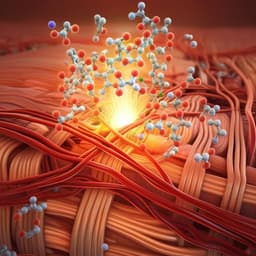
Medicine and Health
NMDARs activation regulates endothelial ferroptosis via the PP2A-AMPK-HMGB1 axis
W. Han, Y. Hong, et al.
This groundbreaking study by Wei-Min Han, Yi-Xiang Hong, Guo-Sheng Xiao, Rui-Ying Wang, and Gang Li uncovers how N-methyl-D-aspartate receptor (NMDAR) activation triggers ferroptosis in vascular endothelial cells, revealing critical pathways and potential therapeutic targets to mitigate endothelial injury.
Playback language: English
Related Publications
Explore these studies to deepen your understanding of the subject.







